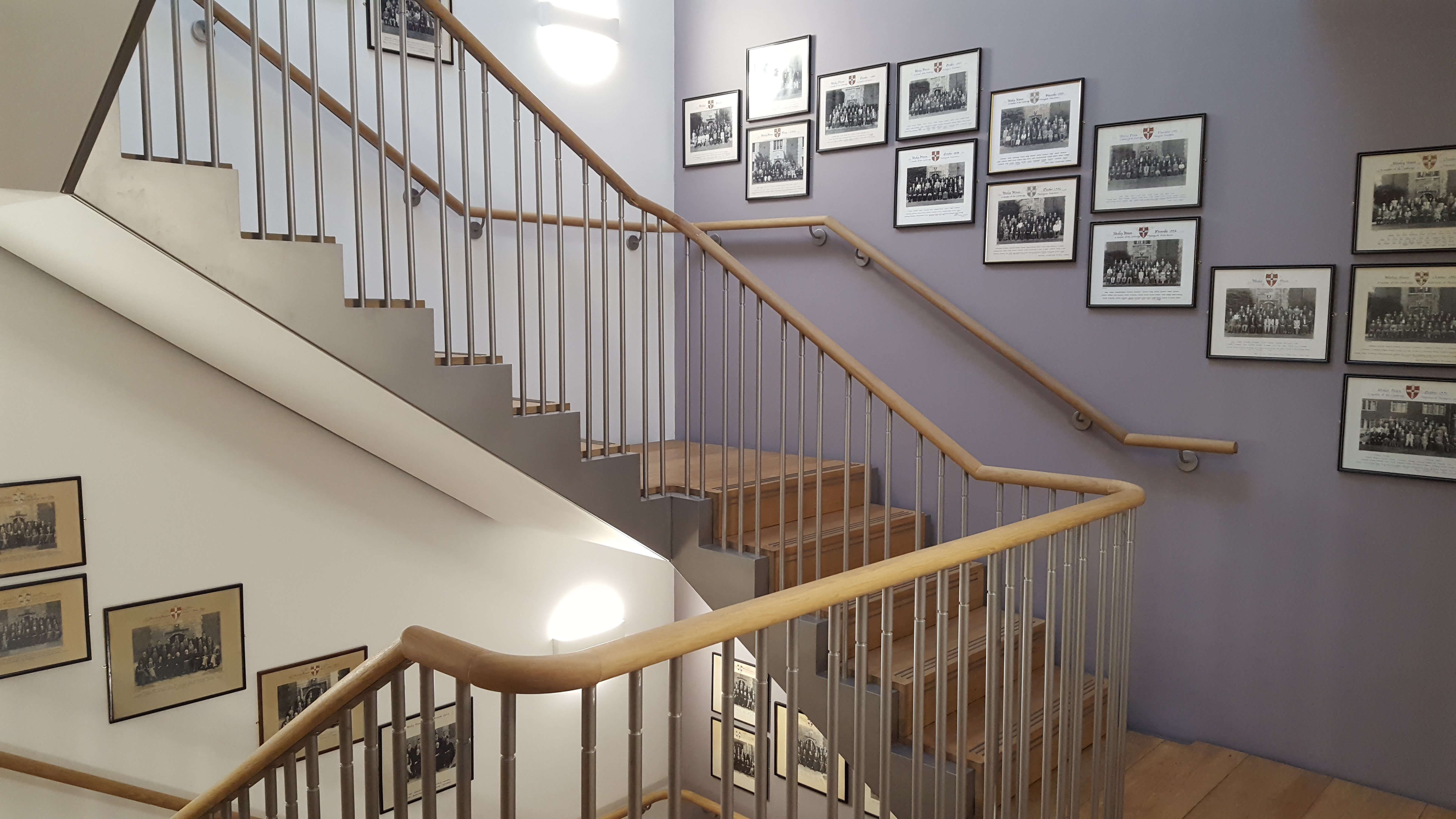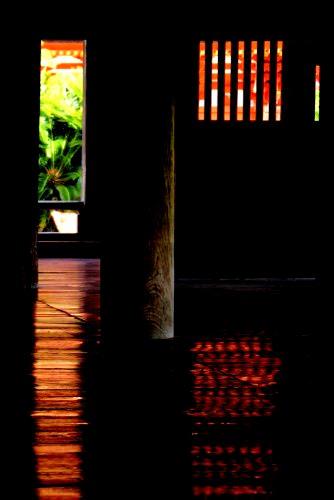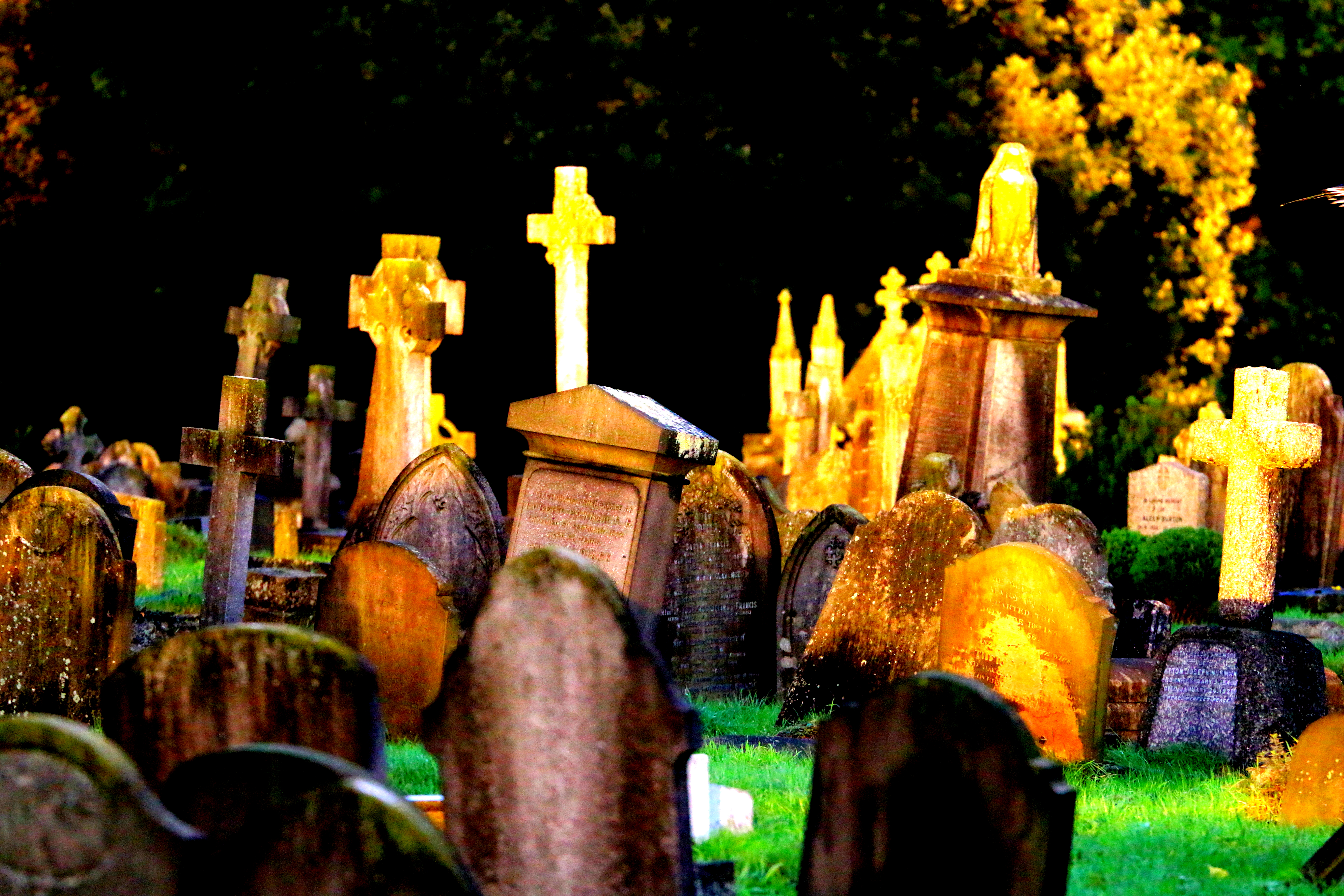Black and White Photographs
On the staircase are displayed the year photographs from 1921 to the present day.
There is also a photograph of William Greenhalgh, benefactor to the college, after whom this building is named.

Colour Photographs
The colour photographs displayed in the corridors represent the doctrinal themes of creation, redemption and regeneration. They were taken by Jane Leach.
On the ground floor the theme is the work of God in creation expressed in blue and green:
These natural images represent aspects of the creation story:
- Water: ‘and God said, ‘Let there be a dome in the midst of the waters, and let it separate the waters from the waters.’ [Genesis 1.7]
- Cow parsley: ‘Then God said, ‘Let the earth put forth vegetation: plants yielding seed, and fruit trees of every kind on earth that bear fruit with the seed in it.’ [Genesis 1.11]
- Moon: ‘And God said, ‘Let there be lights in the dome of the sky to separate the day from the night; and let them be for signs and for seasons and for days and years, and let them be lights in the dome of the sky to give light upon the earth.’ And it was so. God made the two great lights—the greater light to rule the day and the lesser light to rule the night.’ [Genesis 1.14-16]
- Peacock: ‘And God said, ‘Let the waters bring forth swarms of living creatures, and let birds fly above the earth across the dome of the sky.’ [Genesis 1.20]




On the first floor the theme is redemption expressed in red and gold:
These stark images represent aspects of Christ’s passion:
- Jesus is arrested: the image is of a barred window through which red light is reflected in the polished wooden floor
- Jesus is escorted by armed guard: the railing spikes echo the shapes of the spears of the Roman soldiers who led Jesus out of Jerusalem to be crucified.
- Jesus is crucified: the image is of a Benin bronze sculpture of the crucifixion. The Christ in this image holds his head up. The golden colours suggest that the cross is the victory of love over violence and death.
- Jesus is laid in the tomb: the tombstones caught in the evening light are at Kensal Green cemetery. The dead await the general resurrection with Christ.
- Jesus mystically offers himself to his followers in bread and wine: the Pelican is a medieval symbol of Christ’s self-offering in the Eucharist. This image is of the sundial at Corpus Christi College Oxford whilst it was shrouded for the quincentennial renovations in 2106





On the top floor the theme is regeneration expressed in orange and gold:
These images represent the work of the Holy Spirit
- The dove hovering over the waters: the spirit hovers over the water at creation and appears at Jesus’ baptism, ‘and he saw the Spirit of God descending like a dove and alighting on him’. [Matthew 3.16]
- Living Water: the water of life is promised by the Spirit in Revelation 22.17. This image is of running water at a Shinto Shrine in Miyajama, Japan, provided for worshippers to drink from the bamboo spoons pictured.
- Lights to the world: those who walk in the light of Christ bear this light for the world. This image is of a light installation on the South Bank of the river Thames in London.
- Dance: dance has been an image for the life of God in three persons, Father, Son and Holy spirit, since Patristic times. This image is of a flamenco dancer in Seville, Spain. It reflects the exuberance and energy of life lived in harmony with God’s perichoretic dance.
- Perspective: this detail of beach huts from Southwold focuses the attention ever deeper and further. Life in the Holy Spirit offers an eternal depth and cosmic perspective.








